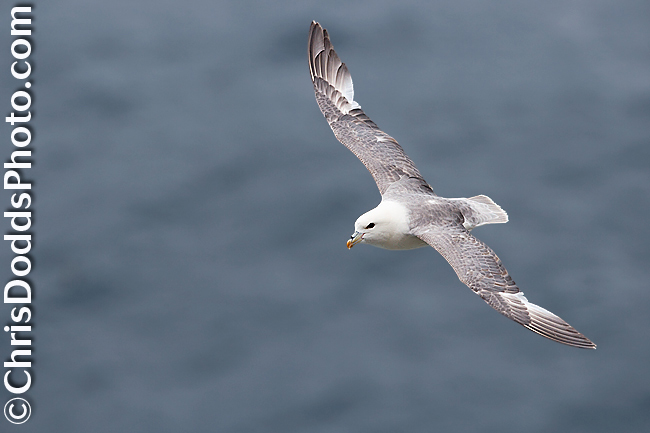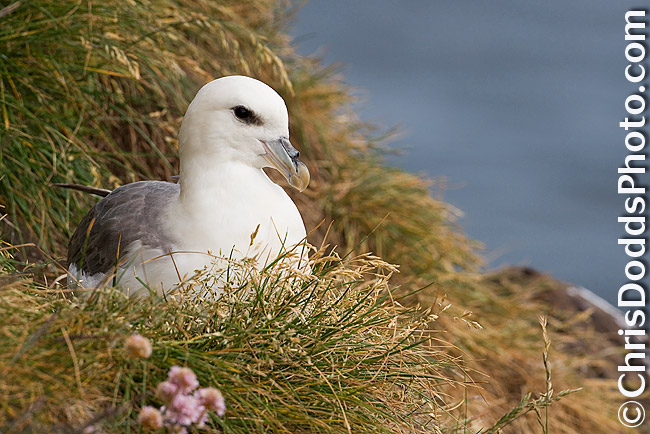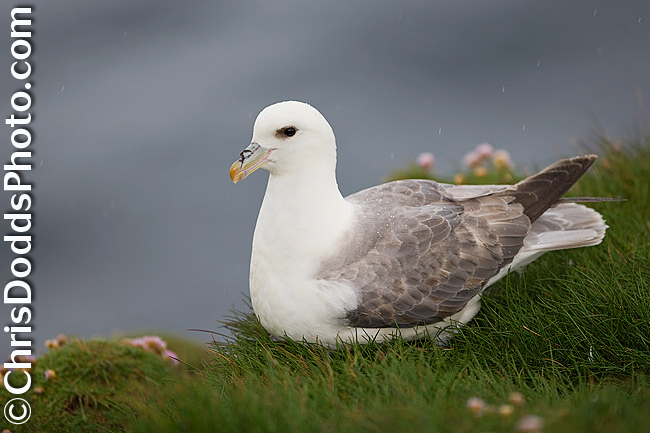Northern Fulmar Portrait , Fulmarus glacialis (Fulmar boréal) Látrabjarg, Iceland ©Christopher Dodds www.chrisdoddsphoto.com All Rights Reserved Canon EOS-1DsMKII, 300mm F2.8IS. ISO 400, 1/320s F5.6 Manual mode. Canon 550 EX Flash in manual mode. Tripod and Wimberley Head. CLICK HERE TO PURCHASE A PRINT OR LICENSE IMAGE FOR PUBLICATION.



Cool Northern Fulmar Facts:
- The Northern Fulmar is one of the longest-lived birds. Data from one study indicate a mean adult life span of about 32 years. In Scotland, several Northern Fulmars banded as adults in 1951 were still breeding in 1990, at ages likely greater than 50 years.
- The Northern Fulmar begins breeding at an exceptionally old age. Most do not breed until they are at least 8 to 10 years old; one study found an individual that started breeding at age 20.
- The Northern Fulmar is well known among commercial fishermen for its avid scavenging of offal thrown from whaling and fishing boats.
- The population of Northern Fulmars in the northeast Atlantic has dramatically increased over the past 250 years. Once only one colony was found in northern Iceland, and none off the Faeroes or the British Isles. Now hundreds of colonies exist across all the coasts of these islands. It is unclear whether this change has resulted from natural oceanographic changes, from increased food availability from fishing vessels, or from some other factor.
- The Northern Fulmar can dive to a depth of at least 3 meters (10 feet).
LensFlare Live & NatureScapes Radio LIVE:
On Tuesday, April 6th, 2010, I was honoured to be the first invited guest on the new NatureScapes Radio Live. Hosted by LensFlare 35's very own Dave Warner, with Greg Downing and E.J. Peiker of NatureScapes.net. Be sure to give it a listen HERE:
